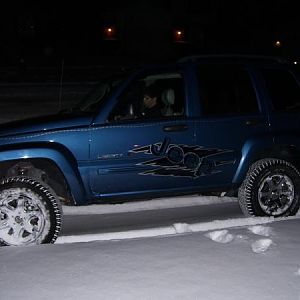Heads up. I have a problem with "rich" fuel trims, both short and long.
Background: I had elected to replace all of the emission-related sensors (MAP, ECT, IAT, etc) and fuel-air mix controllers (Intake Air Control Valve, Throttle Position sensor, Evap purge) that I could do myself.
In the precess of replacement I found a broken o-ring on the MAP sensor, which might explain the PCM pumping extra fuel and causing the "rich" mix.
I bought a new MAP sensor from AMZN and put it in, o-ring properly seated. Still suffering a "rich" mix condition. LTFT1 > 14.0 LTFT2 > 20.0.
Went back and reviewed parts ordered from AMZN, and thanks to their incorrect "fitment" feature, I found out that I bought the wrong MAP.
I am now waiting for the arrival of the correct part and will update this after installation and testing.
AMZN fitment disinformation: 56041018AB
Correct MOPAR part: 68002763AA
Look here (or similar elsewhere) for the correct MAP fitment: https://www.quadratec.com/products/55122_2005.htm
My own fault for trusting AMZN and their sponsored Chinese Supply Chain
Background: I had elected to replace all of the emission-related sensors (MAP, ECT, IAT, etc) and fuel-air mix controllers (Intake Air Control Valve, Throttle Position sensor, Evap purge) that I could do myself.
In the precess of replacement I found a broken o-ring on the MAP sensor, which might explain the PCM pumping extra fuel and causing the "rich" mix.
I bought a new MAP sensor from AMZN and put it in, o-ring properly seated. Still suffering a "rich" mix condition. LTFT1 > 14.0 LTFT2 > 20.0.
Went back and reviewed parts ordered from AMZN, and thanks to their incorrect "fitment" feature, I found out that I bought the wrong MAP.
I am now waiting for the arrival of the correct part and will update this after installation and testing.
AMZN fitment disinformation: 56041018AB
Correct MOPAR part: 68002763AA
Look here (or similar elsewhere) for the correct MAP fitment: https://www.quadratec.com/products/55122_2005.htm
My own fault for trusting AMZN and their sponsored Chinese Supply Chain










